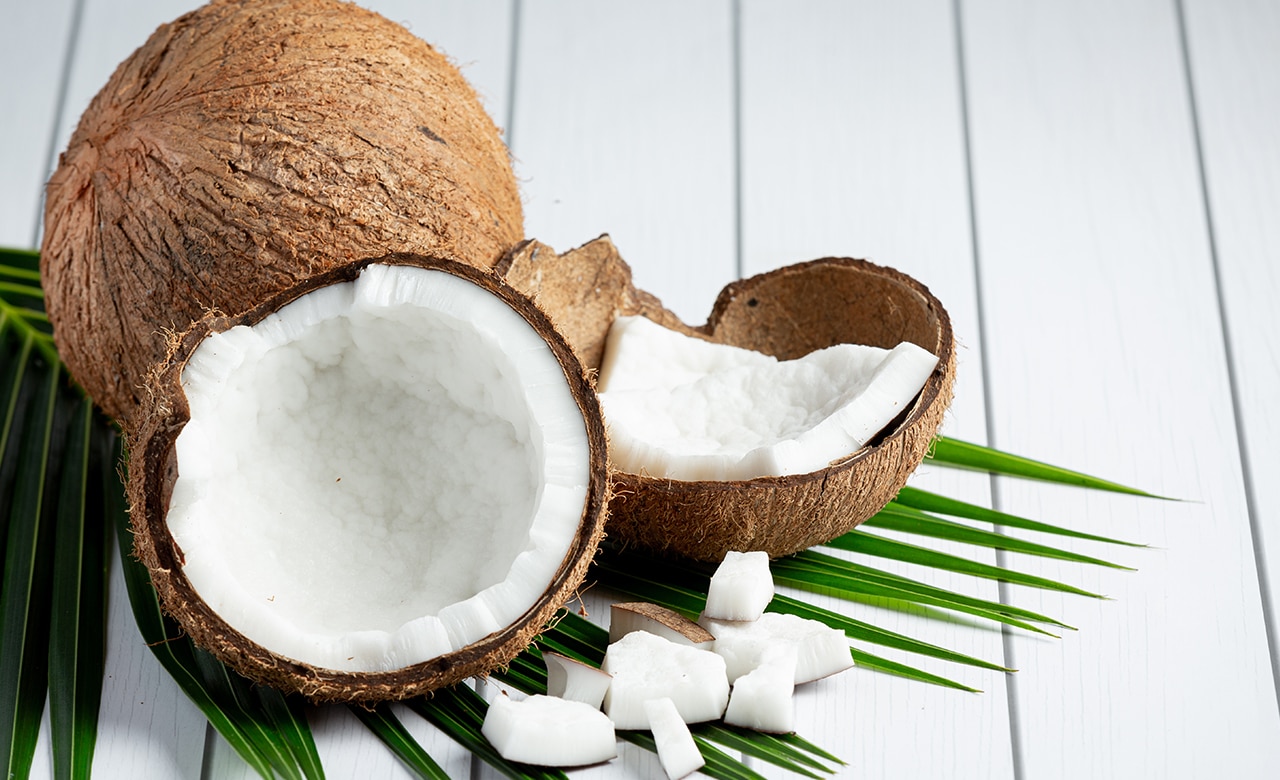
Informative
Coconut the Celestial Fruit
नारीकेलसमाकारा दृश्यन्तेऽपि हि सज्जनाः । अन्ये बदरिकाकारा बहिरेव मनोहराः ॥
Evil people are like berries, sweet from the outside but hard inside. And to contrast, decent people are like a coconut. They look hard from outside but tender from within.
This ancient Sanskrit saying explains the difference between good and evil people. Bad people might look good with their sweet talk, but they will be crooked in their minds. Good people may look hard and harsh with their straight talk, but they will have a sweet mind. In this blog, we will learn about the significance of coconut in Hinduism.
Coconut is called Shriphala. Shri means the God, and Phala means the fruit, translating coconut to the fruit of the Gods. Take any ritual in Hinduism, and you will find coconut there, offered to the gods. May it be naming ceremonies, weddings, festivals, inaugurations, a wrestling match, buying a car, or building a multistoried apartment. You will see a coconut being broken in front of the Gods, later distributed as Prasadam.
There are several reasons behind breaking the coconut in front of the Gods.
Ego: Before praying, before surrendering to the Gods, one must be free from ego. Coconut represents the ego of a seeker. As per the scriptures, the outer hard layer is considered anger, lust, negativities, and ego. Therefore, one cannot offer their prayers while being infested with those negativities. And hence, a devotee breaks the ego to expose his soft inner self, representing his purity, innocence, and positive thoughts.
Purity: Do you know that coconut water is identical to human blood plasma? During world war 2, due to a shortage of saline solutions, coconut water was given intravenously to the allied forces.
For hundreds of generations in India, the coconut has been considered the most pious and purest fruit on earth. Being the most pristine, it is offered to God.
The Holy Trinity: Brahma, Vishnu, and Shiva are considered as the holy trinity in Hinduism. If you look closely, you must have seen three dots on the coconut. When the coconut is placed in front of the Gods at the beginning of the worship ritual, you invite this holy trinity to be a part of the process. It is believed that they arrive and bless everyone present there.
The creation: During the wedding ceremony, the coconut is gifted to the bride, which is placed on her lap, inviting the celestial forces of the universe to grant power to the bride to procreate life. Unlike other fruits, a coconut must be planted as a whole to grow a tree from it. And hence, the fruit represents creation itself, capable of creating thousands of trees and a biosphere.
Selflessness: The coconut tree is also called Kalpavriksha, meaning a wish-fulfilling tree. Apart from oil, every part of the coconut is used in India for some or other purposes. The tree trunk is an exceptional wood for building. Its branches are taken out and woven to make the roof. The roof made up of coconut trees are waterproof and give excellent protection against rain. Every part of the coconut is being used for thousands of years by man, and hence, in India, the coconut tree is considered highly auspicious, representing an ideal human being, ready to give everything for the betterment of society.
Adi Shankaracharya was a legendary philosopher born 2500 years ago in India who transformed Hinduism by removing its flaws. One such flaw was animal and human sacrifice. It is said that it was Adi Shankaracharya who replaced the brutal practice of sacrificing a life with a coconut. As coconut looks like a head with a beard, it is broken in front of the Gods as an offering, till this date, even after 2500 years.
So next time, whenever you are in a temple offering a coconut to God, please keep these things in your mind. Surrender your ego before praying. Even though it is recommended to offer coconut to the Gods, it’s not mandatory. God accepts anything offered with devotion and affection. In Bhagwat Geeta, Lord Krishna says,
पत्रं पुष्पं फलं तोयं यो मे भक्त्या प्रयच्छति | तदहं भक्त्युपहृतमश्नामि प्रयतात्मन: ||
If one offers me just a leaf, flower, fruit, or just the water with devotion, and in pure consciousness, I delightfully accept the offerings with love.
To stay connected and to receive information about upcoming spiritual events, please subscribe to our mailing list.
We hope this blog helped you understand the spiritual importance of a coconut. In case of any queries, please write to us at info@chamundaswamiji.com.
Post a Comment
-
Subscribe to Our Blog
-
Categories
-
Popular Articles
- Dead moth in the house. What universe is trying to tell you?
- Spiritual Meaning of Moth
- Vivah Bandhan Curse – What Is It and How to Spiritually Heal It.
- What are Beej Mantras?
- The Dasa Mahavidyas
- Tripura Sundari | The Dasa Mahavidya
- Maa Bhuvaneshwari | The Dasa Mahavidyas
- Ramakrishna Paramhansa – The Man who almost became a Woman
- The Five Shades of Tantra
- Maa Chinnamasta | The Dasa Mahavidyas



